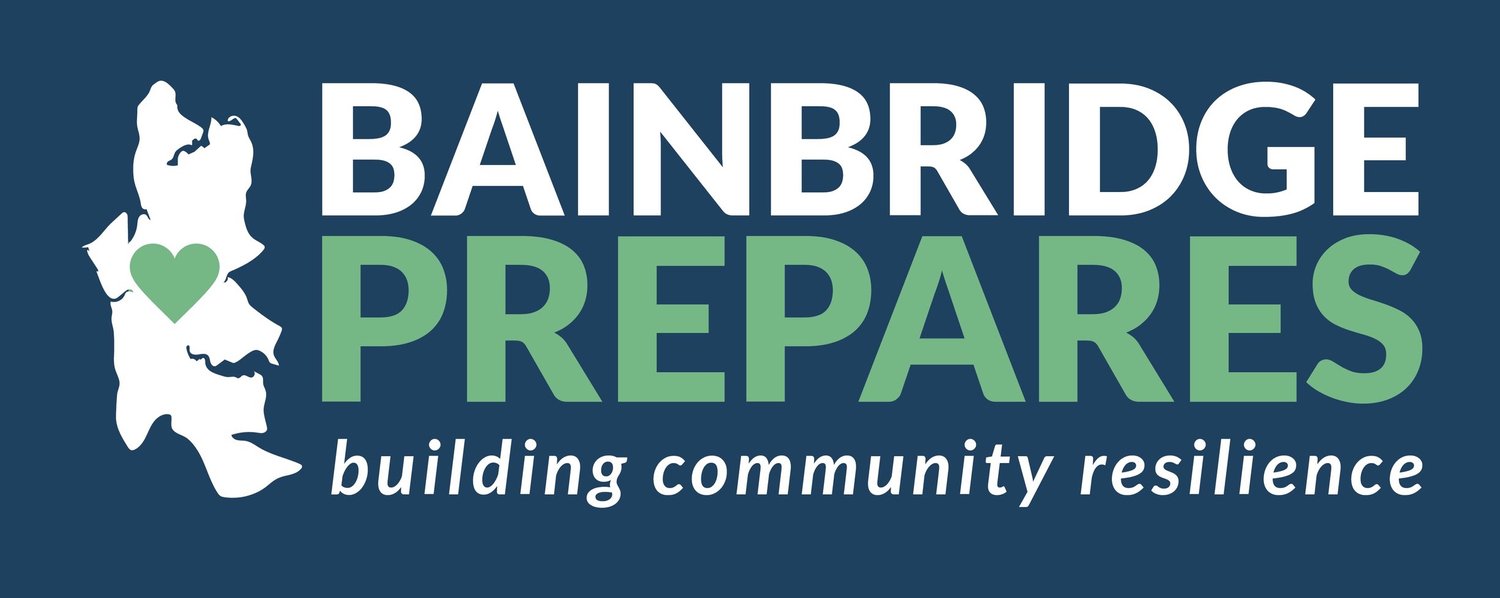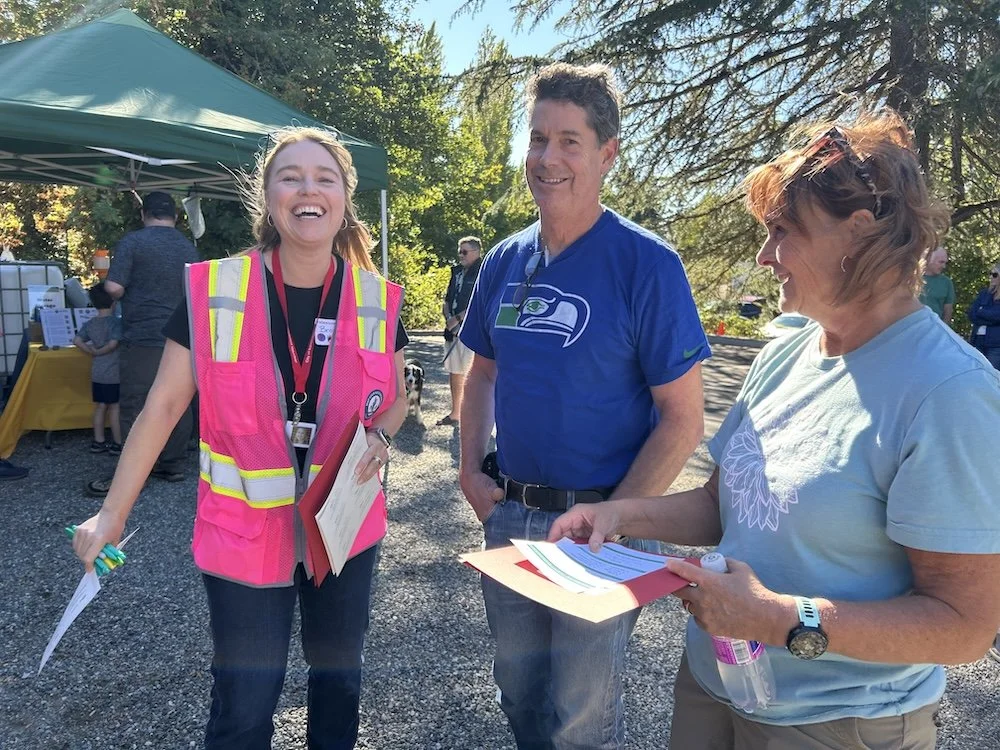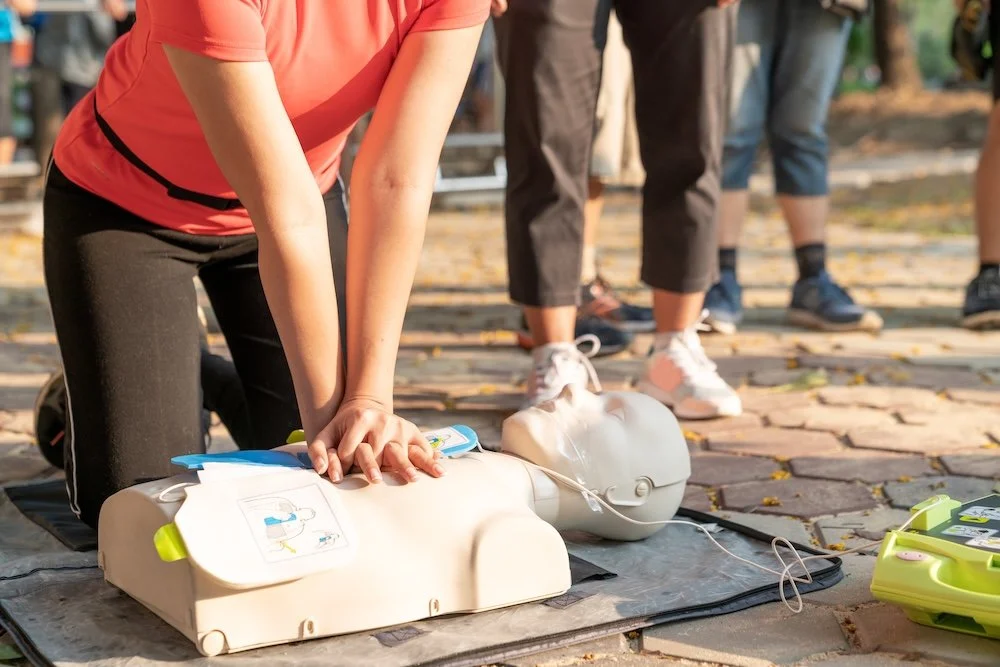Prepare in a Year 2025: Getting Home or Away
Our Prepare in a Year program helps you get ready for disasters, like large-scale earthquakes that isolate us from outside help for weeks or longer. By tackling one simple task per month, you can get your household in good shape by the end of a year.
The task for June is to prepare for the potential need to evacuate and for managing when you’re stuck away from home, such as at work or at school, during an emergency. What this entails is stocking multiple bags that you keep at home, at work/school, and in your vehicle.
Go Bag
Even on an island, we may sometimes face the call for evacuation. This is most likely during a wildfire event. If that happens, you will monitor your phone for Nixle alerts. When your fire zone is issued an alert, you will grab your go bags and wait for the evacuation order.
Everyone in your household should have a go bag. One person’s bag can also include essentials for everyone to share.
The individual go bags should have the following items:
Food (shouldn't require refrigeration or preparation; should include high-energy foods like peanut butter, granola bars, or trail mix and should include comfort foods; consider dry meats like beef sticks and jerky)
Water (one quart per person per day for 2 to 3 days)
Flashlight
Extra batteries
Light sticks
Whistle
Toiletries & wet wipes
A set of extra clothes
Hat and gloves
The shared go bag should also include:
Important documents (or ensure you have online access to them)
Radio (battery/crank)
First aid kit
Multi-purpose tool and knife
Garbage/plastic bag
Cell phone chargers and cords
Medications
Pet items (food, water, leashes, harnesses, waste bags, medications)
Duct tape
Items you need for children and other household members (diapers, games, toys, extra glasses)
Read more here.
Get-Home Bag
Commuters and schoolchildren need supplies for emergencies when they might get caught away from home.
If your bag is for walk-on commuting, going to school, or riding a bicycle or motorcycle, reduce the quantity of items, of course. Think about what you will need for a day or two until you can get back home again.
If the bag is for a child, involve the child in making the kit so you can make sure that what they value is included and so they become familiar with the contents.
Here’s what to include:
Water (emergency water pouches)
Protein snacks or granola bars (be mindful of food allergies)
Small first aid kit
Emergency blanket
Small flashlight
Surgical Mask/KN95/N95
Extra health-related items your child uses
Chapstick and antibacterial hand sanitizer
Wipes
If the get-home bag is for a child,, add the following:
Family reunification card (with contact info) and family photo to help with reunification
Hard candies for comfort & energy
Comfort item (small stuffed animal or toy)
Read more here.
Vehicle Bag
Keep a bag in your vehicle for evacuation/get-home emergencies. Include the following items:
Small shovel
Jumper cables
Tow chain
Road flare
Waterproof blanket
Matches in a water-proof container
Seasonal equipment (water, hand warmers, more blankets, tire chains)
Extra keys
Read more here.
Want to win prizes? Visit the Prepare in a Year page for June to find out how.





